
50 Basement Storage Ideas
Don’t let your basement’s space go to waste. Just because it isn’t a finished space doesn’t mean you can’t make the most of it with some great basement storage ideas.
Whether finished or unfinished, your basement is a natural storage area. These roomy spaces can hold a wide variety of items, from bike storage to seasonal gear to wine. However, basements can have moisture issues or pest control problems. Because of this, a below-ground space isn’t ideal for all types of home storage.
Proper basement storage requires using the right kind of containers and shelves. Airtight plastic bins are ideal for storing easily damaged valuables that could suffer from mold or pests in an unfinished basement. Storing bins on shelves helps eliminate the risk of water damage if the basement were to flood. Remember that even if your basement has never flooded before, a severe storm could catch you by surprise.
Certain issues also arise when storing items in finished basement rooms, but wise planning can help prevent most of them. Basement closets, curtains, and cabinets provide space to stash extra items out of sight. Creating a basement storage zone can help free up space in your home and garage. Check out the following basement storage ideas and find the inspiration to revamp your basement into the perfect storage space.
See more about - 70 Basement Floor Ideas
Table of Contents
1. Smart Basement Storage Ideas for Storing Food
The basement is generally not recommended for food and beverage storage. This is because basement storage spaces are prone to temperature fluctuations, mold, mildew, and pests. However, it can be a good space for storing wine, canned goods, and root vegetables. It is also a good place to create an emergency food supply pantry.
An emergency food stash is a good idea for most families, especially those who live in areas with frequent weather emergencies. Some may want to stockpile food in case of crisis situations but also lack the extra kitchen pantry storage space to hold it. Storing a backup food supply is a good utilization of extra basement storage space. Because of its cooler temperature, the basement makes a better food storage area than a garage.
Open metal shelving is perfect for lining up home-canned jars or store-bought canned food. Use plastic or wood crates to hold smaller items, such as spice containers and packets of freeze-dried food. Transparent plastic containers help you to see what’s inside, but solid ones keep you from adding to the basement’s visual clutter.
An old fashioned root cellar can extend the life of potatoes, onions, pumpkins, apples, and other durable fruits and vegetables. This type of storage area must be cool – ideally, between 32 and 40 degrees Fahrenheit. Ventilation is a must in a root cellar basement storage room, as the ethylene gas from certain produce can cause other fruits and vegetables to spoil.
Ideally, a root cellar should be a dark space, separated from any other basement food storage unit. Even hardy produce needs humidity to stay fresh, but the levels required could rust cans and jar lids. Wood shelving won’t rust, but a plastic shelving unit will work for food storage, too.
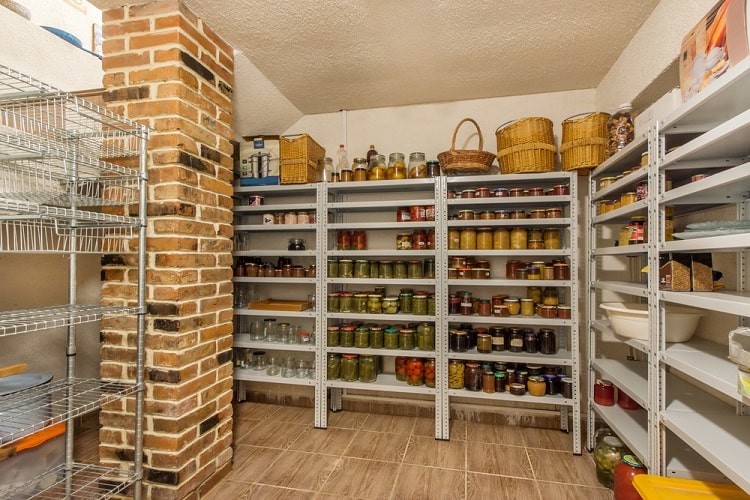


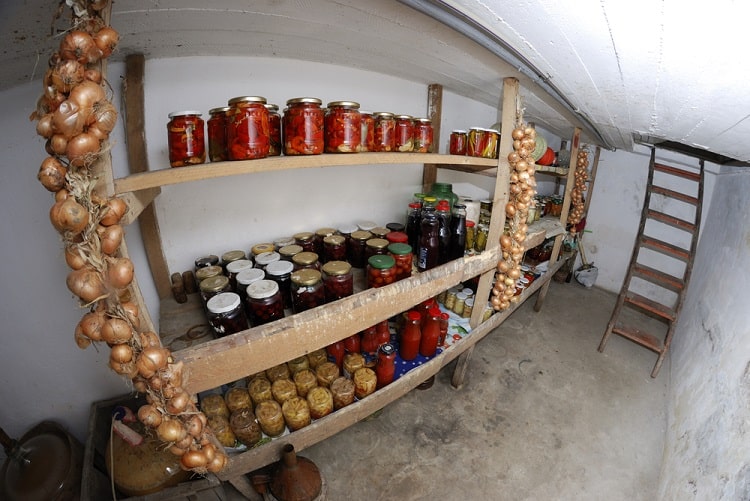



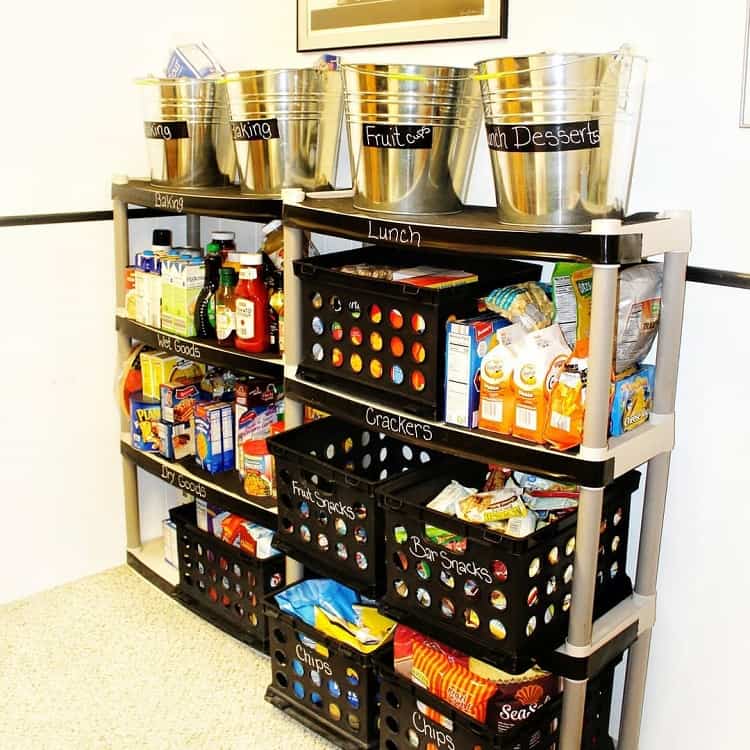
2. Efficient Storage Solutions
Many families need basement storage ideas for sports and recreation equipment. It can be surprising how much gear children need when they participate in multiple activities. Basement storage is good for this kind of equipment since most of it is already temperature and moisture-resistant. For convenience, store this season’s gear in the garage, and keep off-season items in the basement.
Sports equipment storage is ideal for making use of extra space on your basement walls. Hang a row of hooks at the bottom of your basement stairs, where it’s easy to send kids down to grab a backpack, bike helmet, or tennis racquet. Make use of floor space beneath the hooks by placing a storage bench in this space. It can double as seating for putting on shoes and also hold baskets full of balls and other sports equipment.
Storage ideas for sports shoes usually work well in basements. A shelving unit can hold the family’s cleats, running shoes, hiking boots, and rain boots. If you have a large basement laundry room, it can double as a storage room for summer outdoor gear. Hang a shelf specifically for storing water toys, floating devices, and lawn games.
Wall-mounted storage racks are great for keeping large items, like bikes and skis, off the basement floor. If you choose this basement storage solution, you can install a pulley system to help you get things down. A pulley will enable you to store items all the way up to the ceiling.

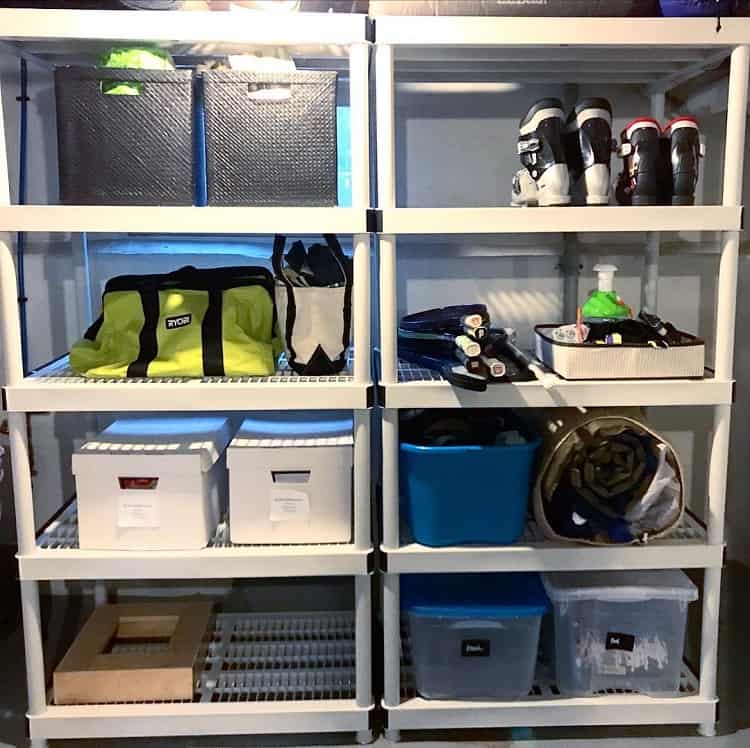

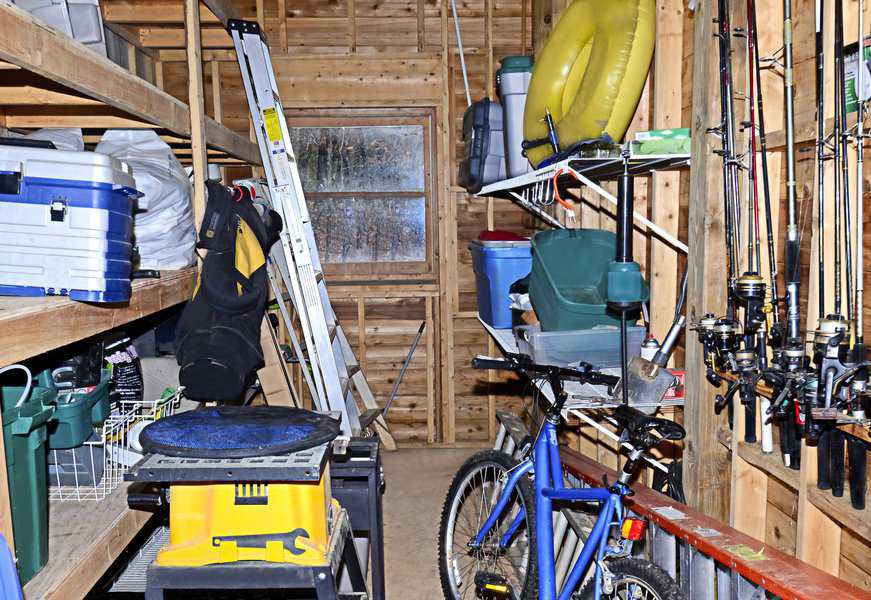
3. Creative Ways to Organize Storage Bins
An airtight plastic bin is a quintessential basement storage solution. These handy storage containers come in a variety of sizes to contain all of your basement organization ideas. If you purchase thick and sturdy storage bins, you may not even need to place them on shelves. You can simply stack them below your basement stairs or along the basement walls.
Color-coding your basement storage bins helps you locate your stuff quickly. For example, store Christmas decorations in red and green bins, Halloween décor in orange bins, and spring items in yellow containers.
Clear plastic bins are also one of the most practical storage ideas for basements. Label each bin clearly to help you find what you need. Labeling each bin is also necessary if you choose to store everything in black or white containers. While color coding makes it easier to find things quickly, it looks nicer to use one color for all your storage bins.
Cardboard boxes are rarely a good idea for basement organization unless you put them inside an airtight plastic tote or bin. Roaches and other pests enjoy chewing on cardboard and can ruin whatever’s inside. If you’re storing extra rugs, pillows, or bedding in the basement, keep them inside the zippered bags they came in or fold them neatly inside airtight bins.
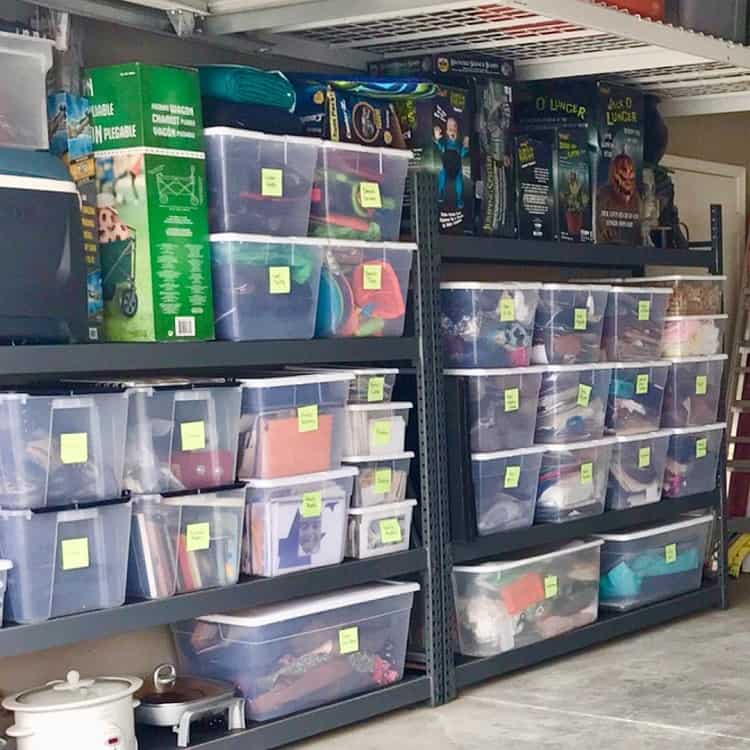
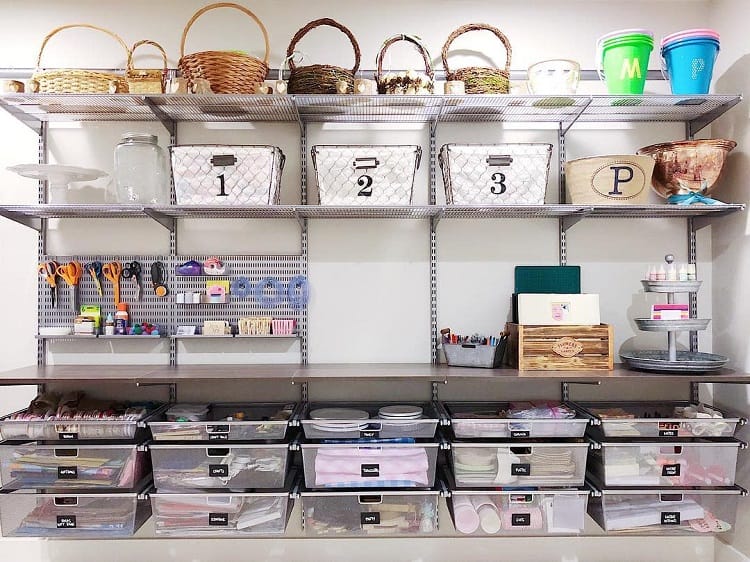
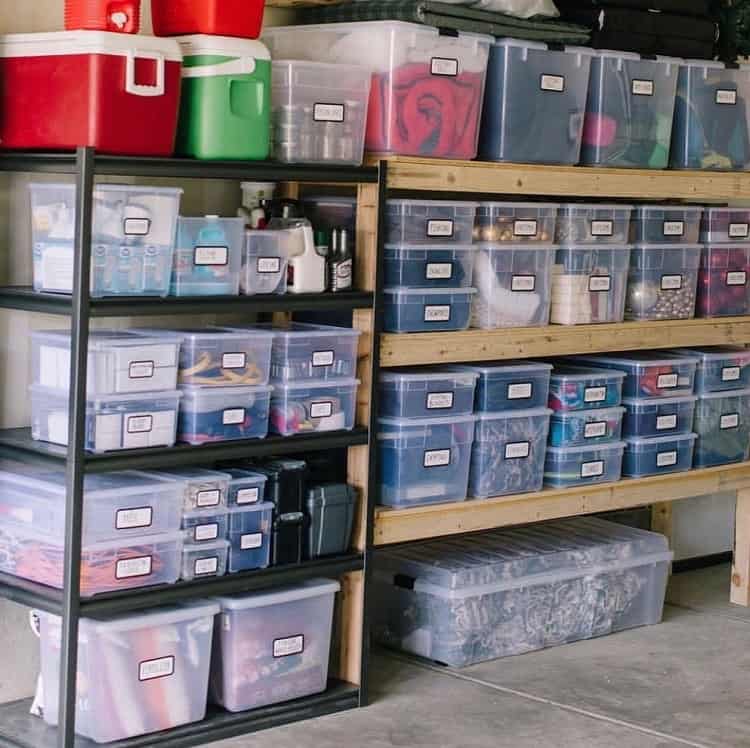
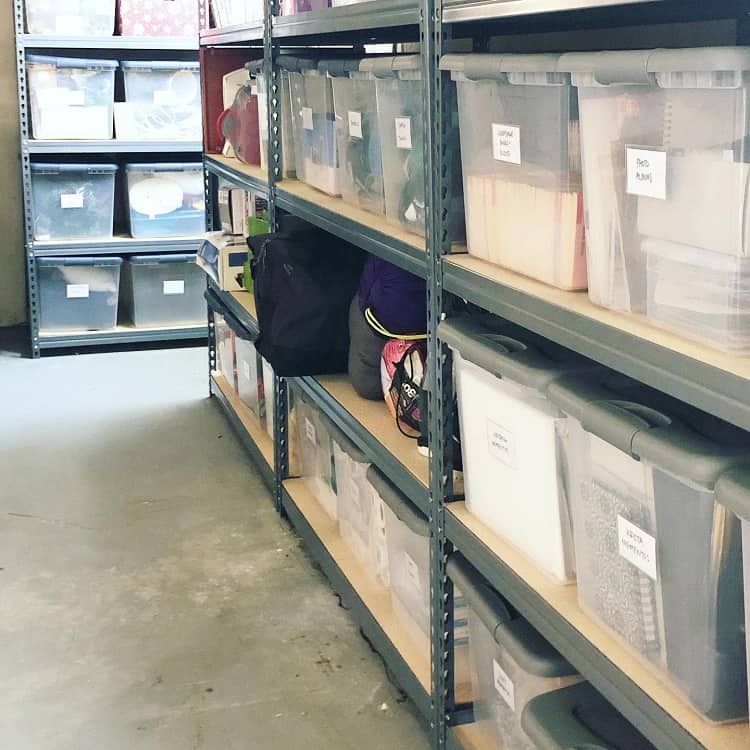
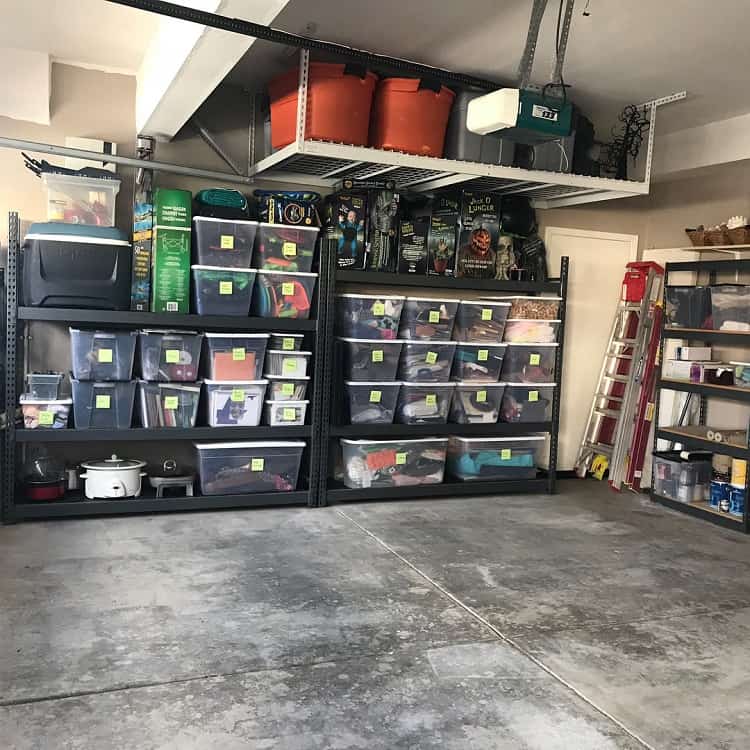
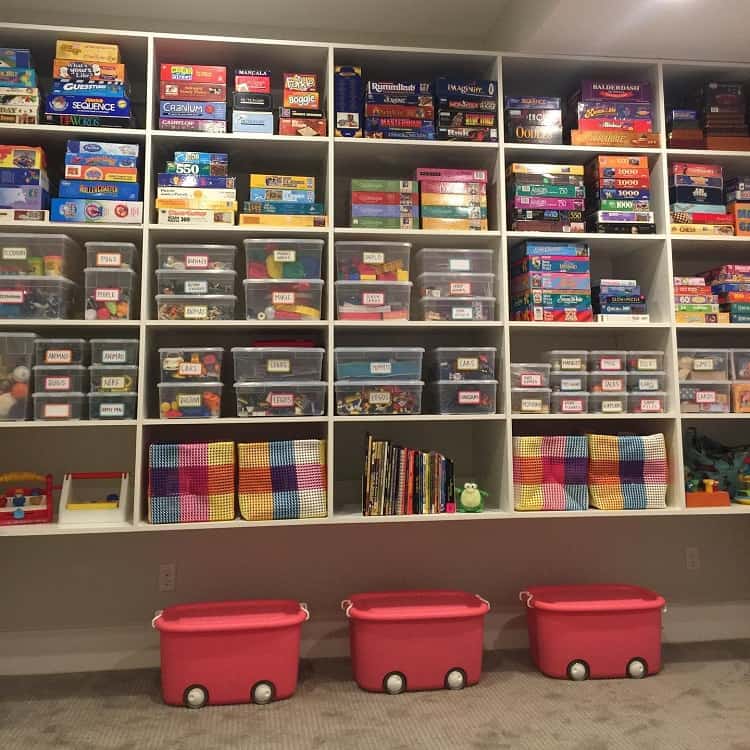
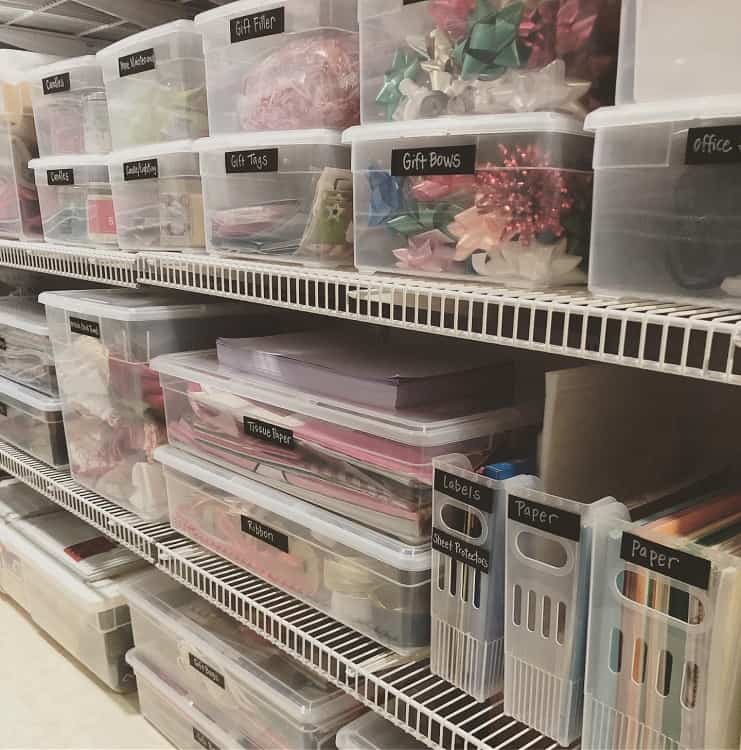
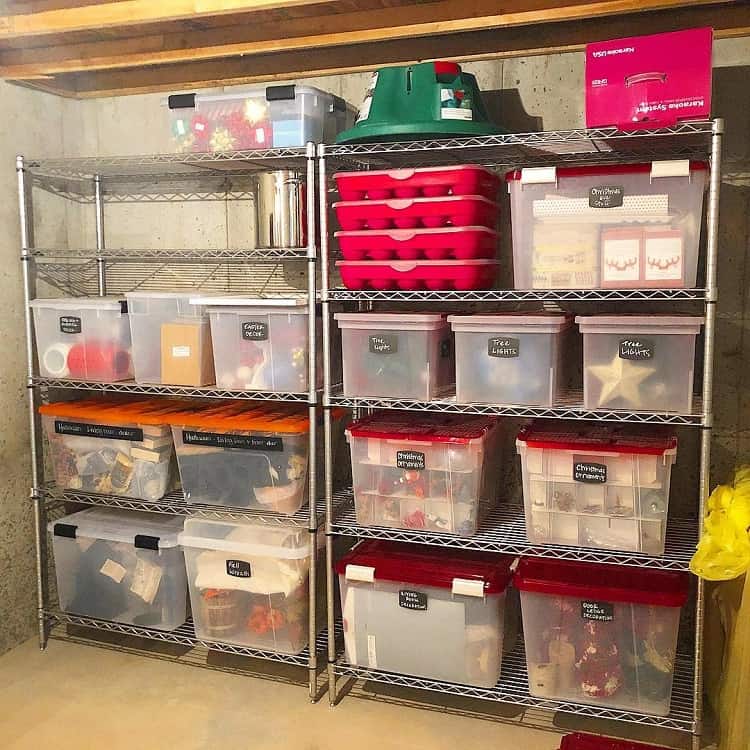


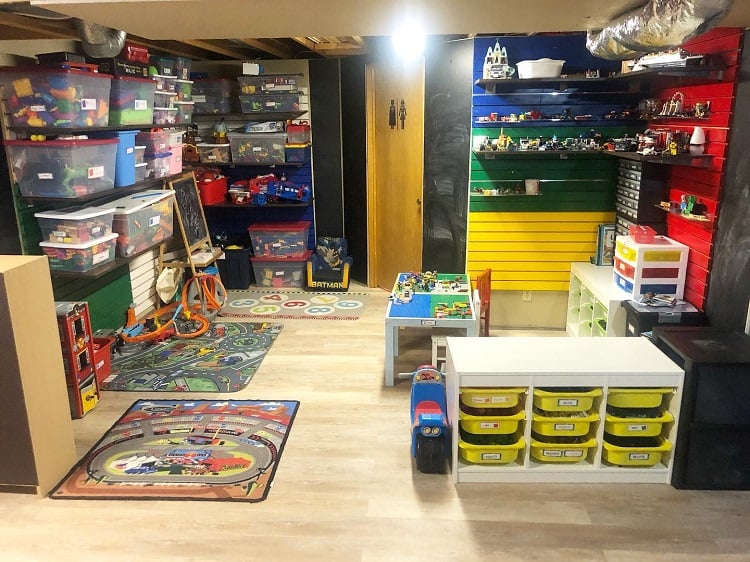
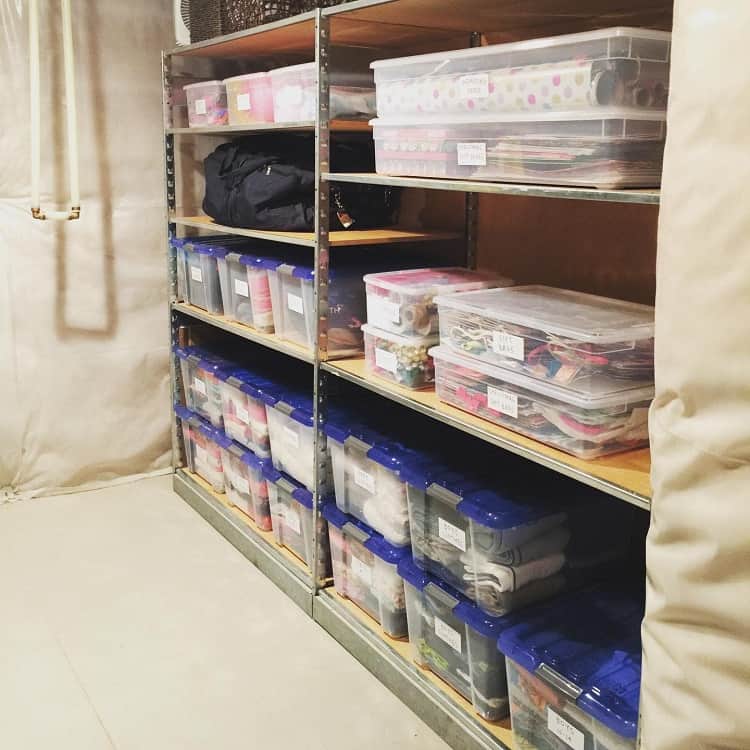
4. Basement Storage Shelf Ideas
Basement storage shelving comes in almost limitless varieties. The best kind of basement storage shelves will differ from house to house, as many factors play a role when outlining storage ideas. Wood, metal, plastic, and composite materials are some of the choices for storage shelves in a basement. The size of your shelves will depend on how much room you have and how much you need to store.
You can save money by building simple shelving yourself instead of purchasing ready-made storage shelf units. Measure the room you’ve set aside in the basement, and use inexpensive pine and plywood to build a basic shelf system. This is one of the most affordable basement storage ideas and can be custom-sized to suit your individual needs.
If your basement storage space is small, look into installing ceiling-mounted storage shelves. These sturdy shelves allow you to store luggage, coolers, holiday decorations, and more up and out of the way. Floating shelves above your head make use of space that you would otherwise waste.
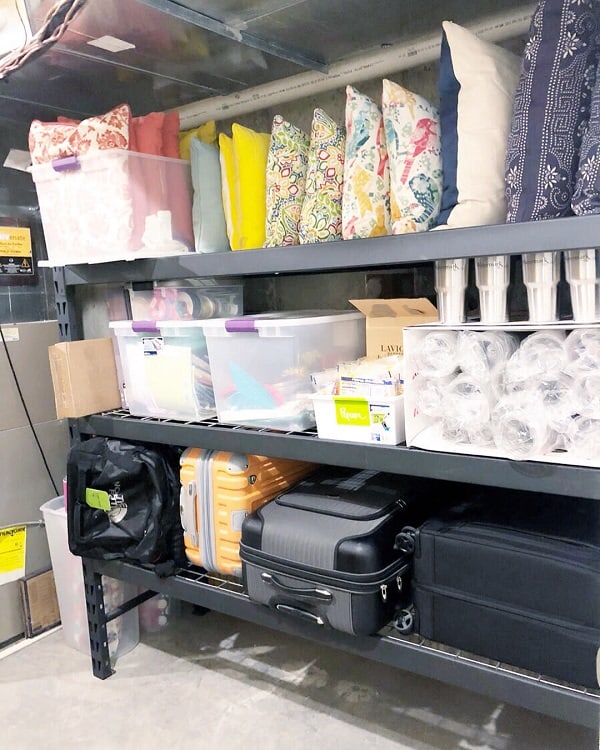
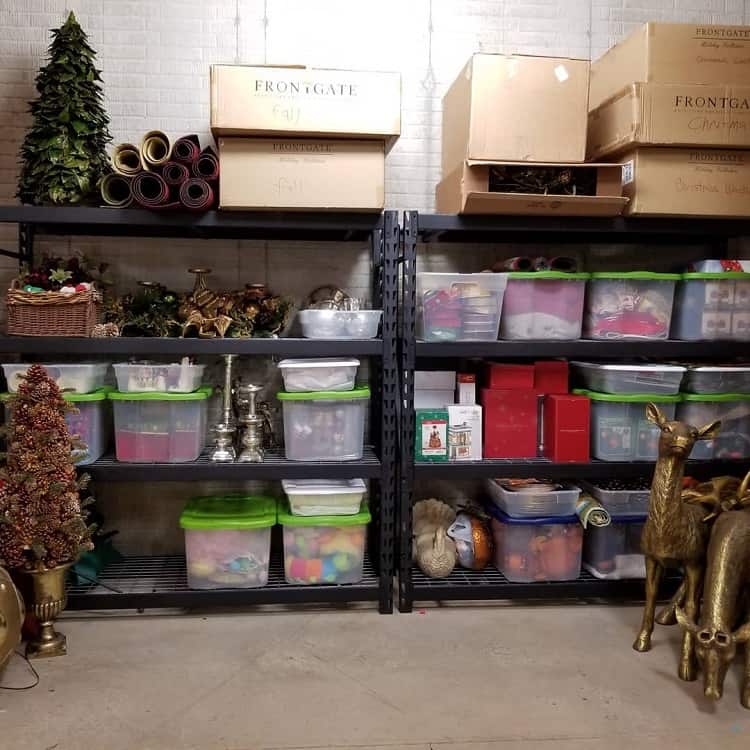
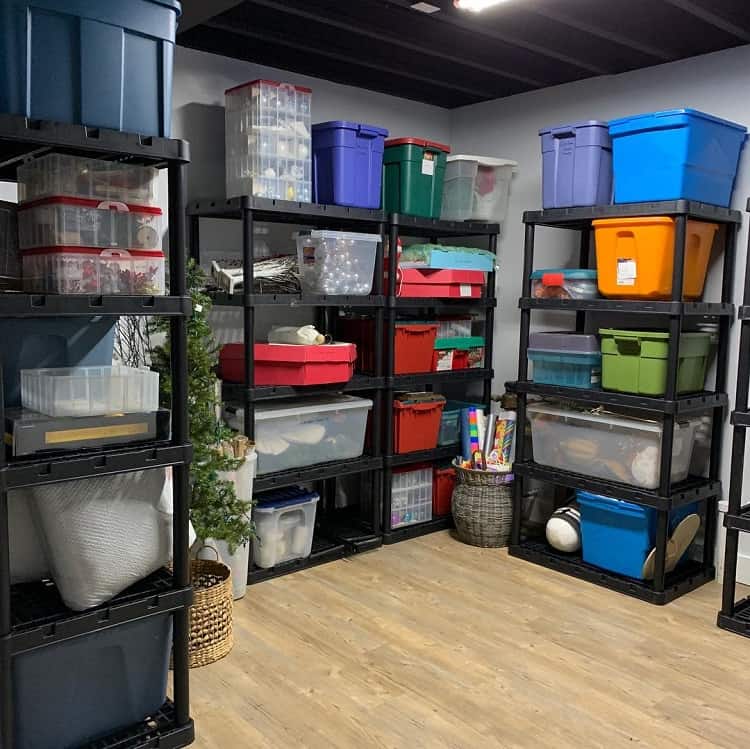
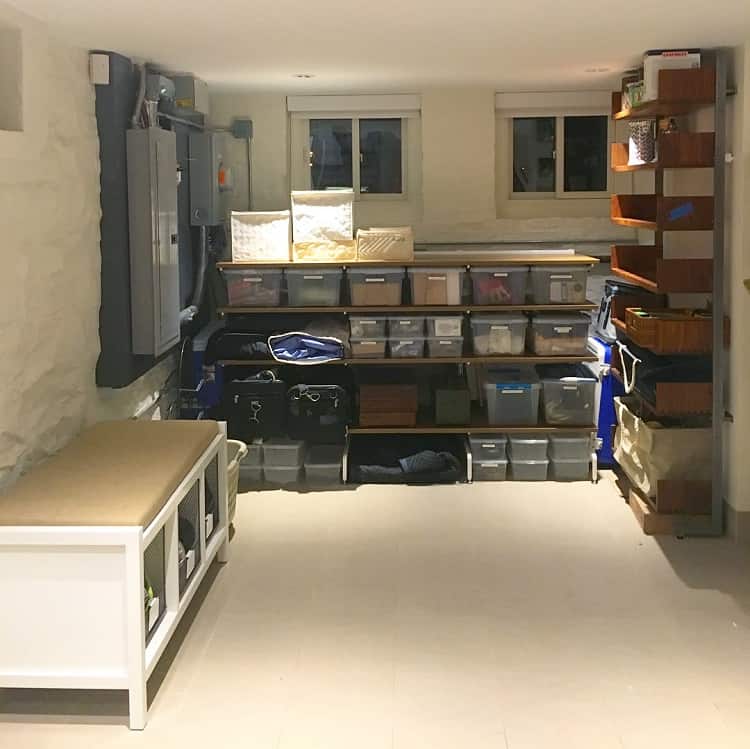

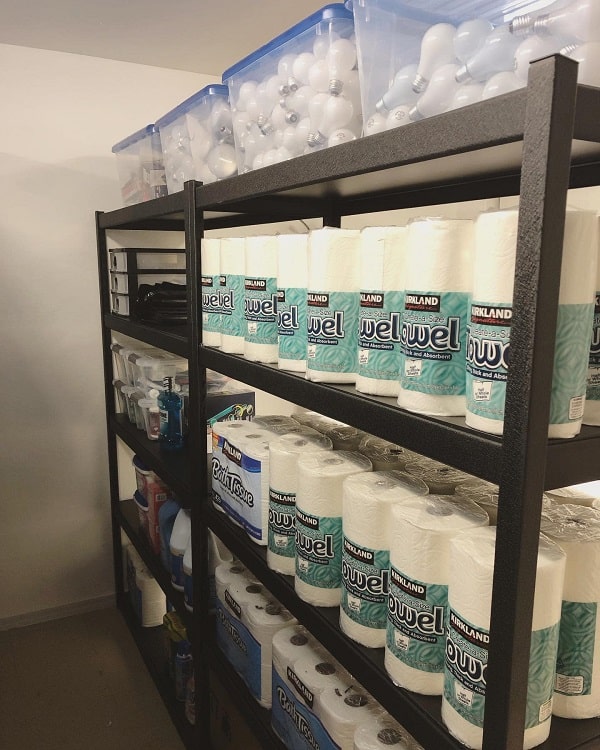
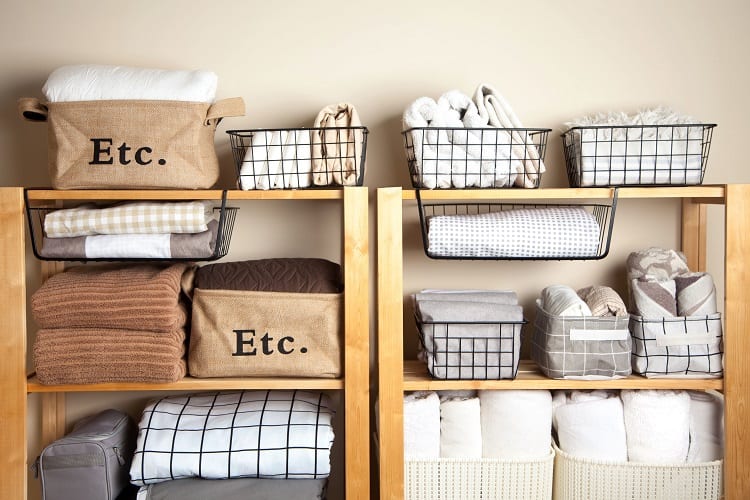
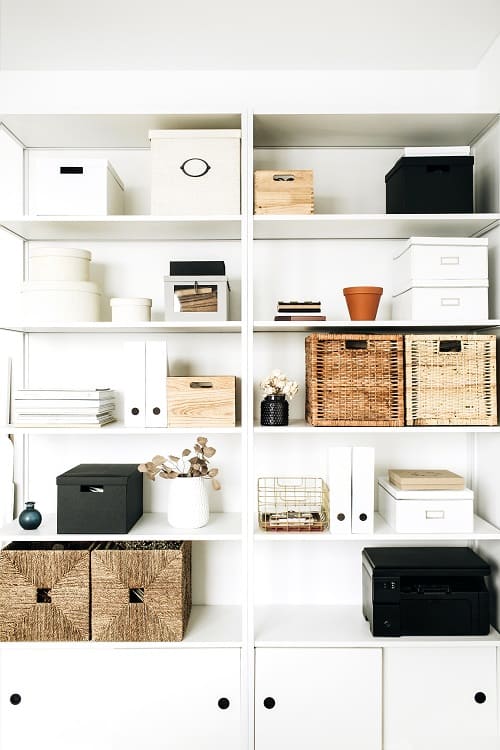
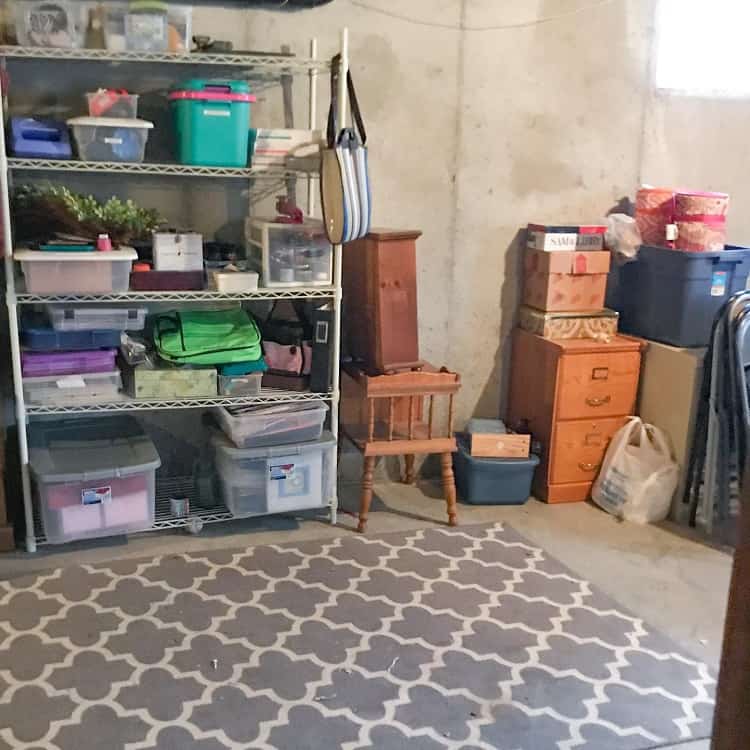

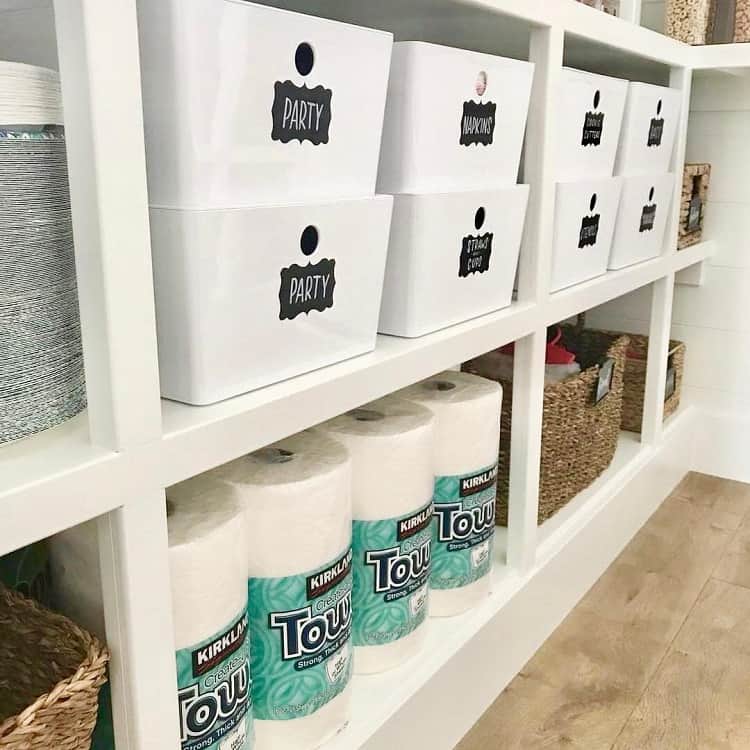
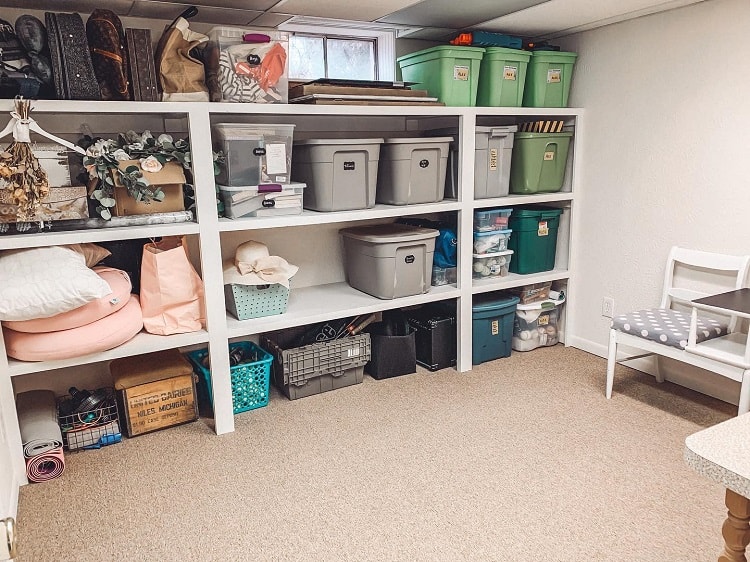


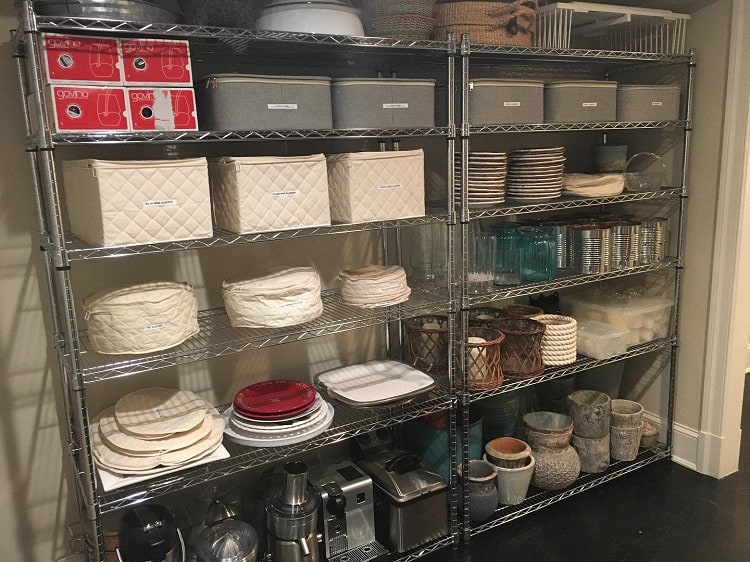
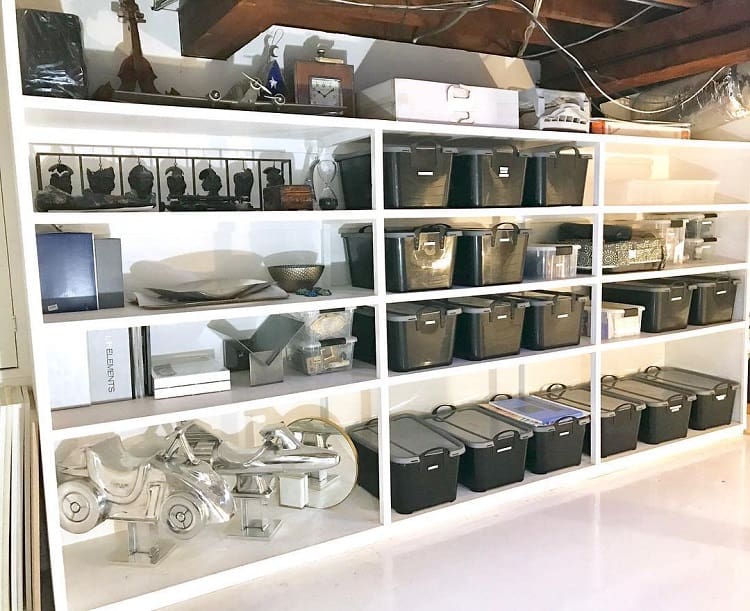

5. Wine Cellar Inspiration
The cool, dark environment of the average basement makes it the perfect place to build a wine cellar. Ideally, a wine storage area should stay at a stable temperature, with low light and no vibrations. Below grade is the easiest place to control the specific light, humidity, and temperature levels required for proper wine aging.
Once you designate an area for your basement wine cellar, study the insulation and vapor barriers you need. Even though basements are generally cool, a wine cellar usually requires a cooling system.
If you have enough basement space, you could integrate a wine tasting table and chairs into your wine cellar. If not, consider adding a tasting room nearby. Unused space under the stairs is a good place to build a small wine cellar. Build wood cubbies and shelving to hold your wine bottles, then add lighting and thermal pane glass doors.

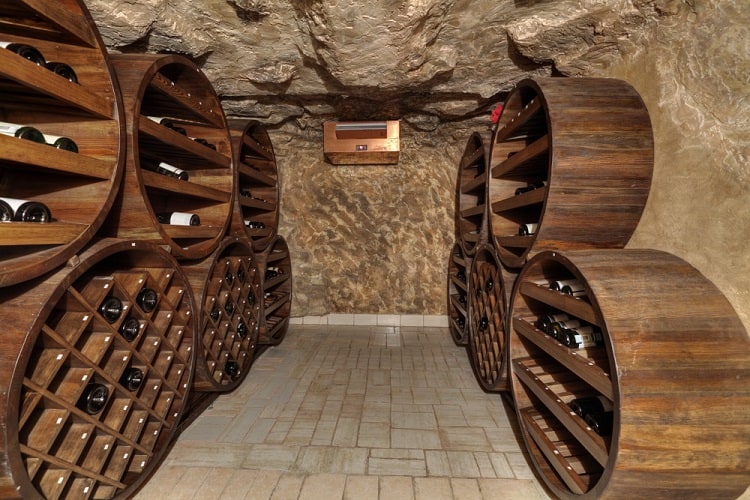


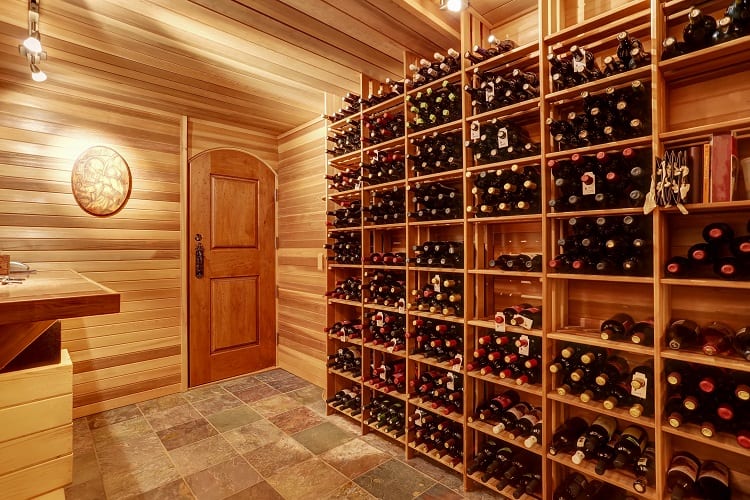
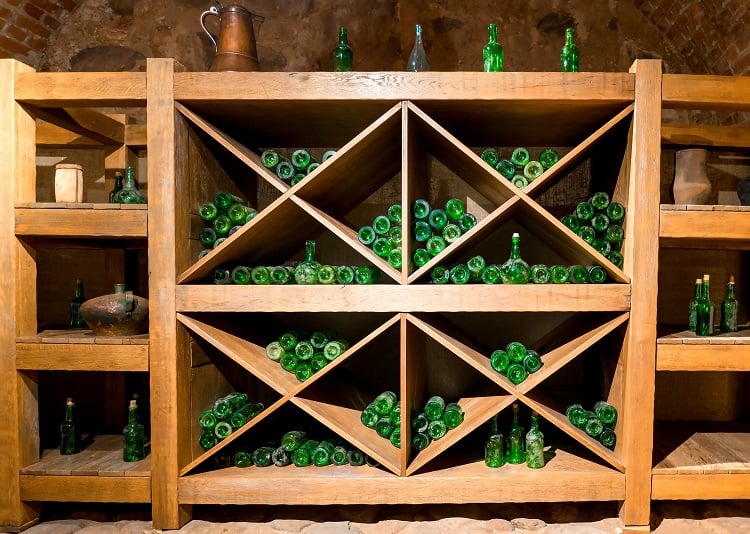
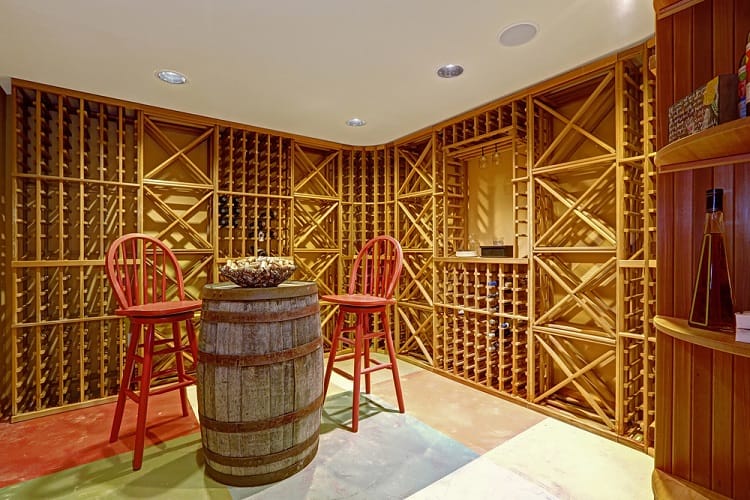

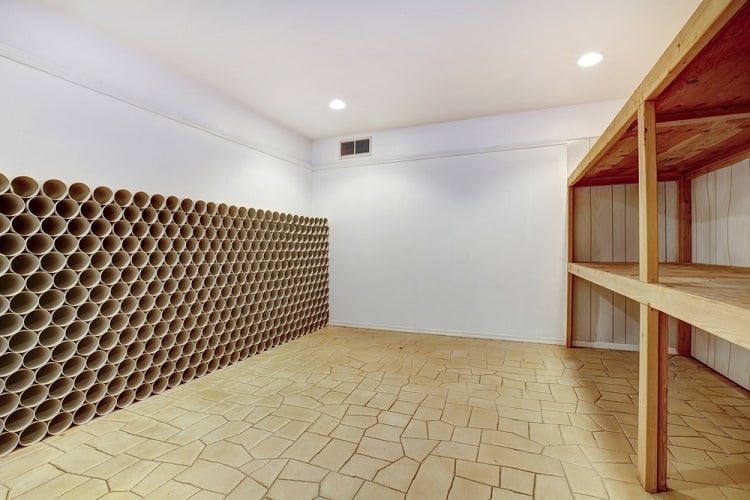
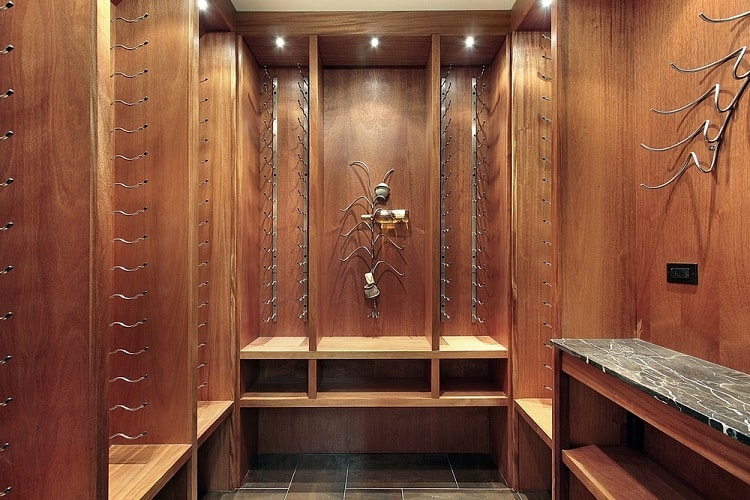

See more about - 76 Small Basement Ideas
Basement Storage FAQs
How should I organize my basement storage space efficiently?
Organizing your basement storage efficiently is essential to maximize the available space and easily access your items. First, sort your belongings into categories, such as seasonal decorations, tools, or sporting equipment. Invest in sturdy, stackable storage containers and label them clearly. Place frequently used items near the front for easy access and less-used items toward the back.
Utilize shelves and wall-mounted racks to store items off the floor, making it easier to keep the area clean and preventing damage from potential flooding. Regularly declutter and remove items you no longer need to maintain an organized and functional basement storage space.
What are the best methods to protect items from moisture or potential water damage in a basement storage area?
Moisture and water damage are common concerns in basements, but there are several effective methods to protect your stored items. First, ensure proper ventilation by using a dehumidifier or exhaust fan to reduce humidity levels. Seal any cracks or gaps in the walls and floor to prevent water infiltration.
Elevate valuable or susceptible items off the floor using pallets or raised shelves to avoid direct contact with moisture. Invest in waterproof, airtight containers for sensitive items. Additionally, consider using moisture-absorbing materials, such as silica gel packs, inside containers to safeguard against excess moisture.
How can I incorporate a workspace into my basement storage design?
Incorporating a workspace in your basement storage area can be highly beneficial for various projects and hobbies. Start by identifying the available space and then designating a specific area for the workspace. Choose a sturdy and spacious workbench that suits your needs and fits within the allocated space.
Ensure adequate lighting in the workspace area to reduce eye strain and improve visibility. Install wall-mounted shelves or cabinets above the workbench to keep tools and supplies organized and within reach. Consider adding a pegboard or magnetic strip to hang frequently used tools for easy access.



